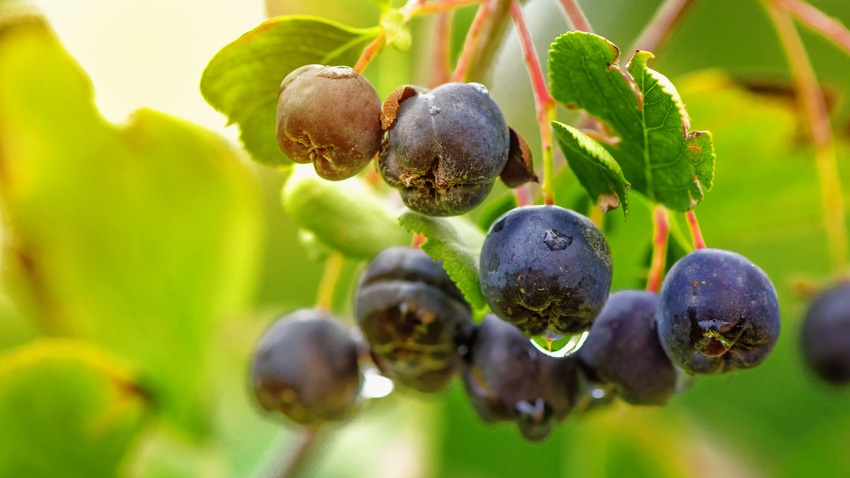
Jams, jellies, juice and wine are just a few uses for many native fruit-bearing shrubs or small trees we often see across the Great Plains and Midwest. These hardy natives have been around for centuries and have provided food for wildlife and humans.
While there are many native shrubs we could have written about, we picked three that are among the most prevalent in many regions. These are common in wildlife and conservation plantings. Although herbicides have reduced their natural stands along creek beds and fencerows from years past, they are still growing wild across the Plains.
3 shrubs
Here’s a look at three native shrubs:
American (wild) plum. Prunus americana is a native through much of the central part of the U.S., including the Plains states. It is a shrubby, multi-stemmed tree that can reach a mature height of about 20 feet, with a spread of 10 to 20 feet. With white blossoms in early spring, you can’t miss the distinct fragrance of what some folks describe as grape “Kool-Aid.” The plums are red to apricot in color, developing a distinct yellow pulp over the summer. Perfect for jams, jellies and wine, the fruits are generally about an inch in diameter.
The leaves of the wild plum are about 3 inches, serrated and oblong, turning yellow to orange in fall. Branches are steel gray and thorny. Commonly found in creek beds and fencerows, these shrubs are coveted by wildlife and are perfect for windbreak and conservation tree plantings. If they are cut back or browsed by wildlife, they will respond with extensively suckering, producing a rather dense thicket.
Chokecherry. Prunus virginiana is a deciduous shrub common across much of the U.S. and southern Canada. Typically, it is a suckering, multi-stemmed plant that grows into a large shrub or small tree up to 25 feet in height with a spread up to 30 feet.
It grows easily, common in waterways and fence lines and is adaptable to many different soil types. It is also drought tolerant and loves full sun. As a native perennial, it is thicket-forming, with dark green leaves that are glossy above and pale below. The leaves turn yellow in fall. Flowers start appearing before leaves are fully developed, anywhere from April to July, with fruit forming two months after flowering. The small ripe cherries are normally dark red, purple or almost black. They contain 3,000 to 5,000 seeds per pound.
The fruits are quite bitter, lending to the “choke” in the name, but they were a staple for Plains Indians. Today, they are prized for use in jams and wine, but the seeds are toxic because of the production of hydrocyanic acid in the leaves, stems and seeds. For wildlife, chokecherries offer food for birds, rabbits and rodents, along with providing nesting cover for a variety of birds and a browsing food source for deer in the winter.
Elderberry. Sambucus canadensis is another multi-stemmed shrub that can grow up to 10 feet tall, with a canopy of up to 12 feet in width. They are hardy across the Midwest and Plains states, with large groupings producing small white flowers in June. In August and September, the small, quarter-inch, purple-black berries are found ripening in clusters on the branches.
It is said that more than 70 species of wildlife benefit from elderberry shrubs in one way or another, so they are perfect for conservation plantings. If you are planting elderberry, know that they prefer partial shade and like to be cool and moist, instead of hot and dry.
They need to be spaced out so there is good airflow, preventing leaf disease issues. It is best to plant two or more varieties within 60 feet of each other to encourage cross-pollination and better fruit production.
Fruit from elderberries can be used to make tea, jam, jelly, juice or wine, and products from elderberries are also used as herbal remedies for cold and flu and to help boost immune and respiratory systems.
Learn more about these and other native shrubs that work in your farm and ranch landscape at your local tree nursery, forestry agency or Extension service office.
About the Author(s)
You May Also Like






